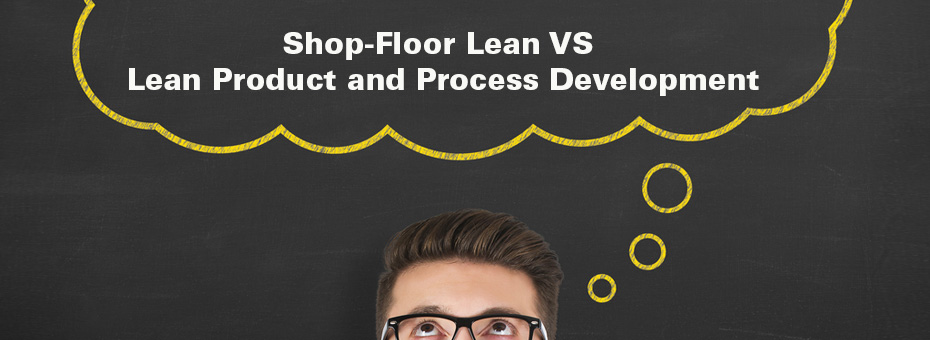I have 15 years of lean experience on the shop floor. Recently my organization’s product development leader was let go and the very next day they told me I would be taking over for him. I’ve never experienced the work that goes on in that department, so all I have to go on is my lean experience. Is my knowledge of shop-floor lean enough for me to get by in product development?
Absolutely. The approaches are different, but the concepts are the same.
The first step in grasping the situation for a customer is to define the purpose for a product that you provide for them. This will also help determine the actual “unit” that you’re going to use later to track your value stream effectiveness. In both approaches, that usually comes from identifying the value from the customer’s perspective. In traditional lean we will look at all the steps involved in creating and delivering a specific product, from raw materials to shipping. In LPPD it’s a little trickier at first, because there are steps that we as engineers know will create useful knowledge for value, but the customer (or other internal functions/areas) may not understand. For example, consider doing multiple learning cycles early on to determine the best parameters and process for developing the specific product; the learning cycles could be viewed as waste or re-work if we are not careful to understand the output value of the process. But what it all boils down to for both approaches is identifying the value from the customer’s perspective, whatever it may be, and designing a value stream that best delivers that value.
The next concept is, “What is the actual work to provide that value?” That’s where you look at the value stream. The value stream in product development is very different, but follows a similar pattern as for manufacturing. The difference for LPPD is that you may have to account for numerous functions spread across multiple locations and time zones, a timeframe of a year or more, knowledge flow, experiments, etc. In LPPD, there are typically two high level phases within the value stream: learning and execution. The learning phase is about generating useful knowledge as you converge to an optimal design concept, and may have multiple learning cycles. The execution phase is about configuring and detailed engineering. An LPPD value stream map will be much more detailed than a manufacturing map, since the timeframe for the latter might have a range in days or weeks instead of years. The framework for value stream mapping in LPPD that Jim Morgan pioneered in early 2000s, is very close to what we use for mapping in manufacturing, and that is what Jim based his method on for LPPD mapping from the 1998 LEI workbook, Learning to See.
Once you actually understand the work, the next question is how do you make that work flow? That’s rather straightforward in shop-floor lean. We shrink batch sizes. We get rid of inventory. We reduce process times. We get rid of any distractions or interruptions to the value-add flow. We add standard work for stability. In LPPD, we do similar activities, but to the flow of knowledge and information. We do staggered release of information. We focus on moving the information faster between process steps with minimal delay. We avoid handoffs, where possible. We aim for repeatable routines at process steps at a standard cadence.
Once you’ve identified how to get the work flowing, you need to figure out how the work should be done for maximum quality and efficiency. An important concept in this step is standard work, which again is very straightforward in factory lean. In LPPD it’s another story, because experiments and tasks are traditionally done at the engineer’s discretion. It’s tough to hand an engineer standard work and say, “This is the known best way to make this prototype” when the given prototype has never been conceived. But the underlying questions in establishing standard work are the same for both factory lean and LPPD: What’s the sequence of work? What are the critical quality points? What are the important safety points?
The last question is really, what’s the best management system to improve and manage the work? Between factory lean and LPPD the available tools and techniques are similar, but the timelines will be different. You might have a visual tracking board to record data on a cycle-to-cycle or hour-by-hour basis in the factory; in LPPD that same visual management board might record data on a daily, weekly, or monthly basis to reflect longer cycle times of work tasks. A dedicated obeya or “big-room” space is recommended for a LPPD team as a critical enabler for a cross-functional team to visually manage their process in order to highlight normal from abnormal.
So in conclusion, it is a logical progression for a person who has deep experience in lean transformation on the factory floor to move upstream in the LPPD space using concepts and thinking that were honed on the production floor. This person will have a higher chance of success if he or she is able to have a flexible approach for applying the concepts, as well as an appetite for learning in a very challenging (yet highly rewarding) LPPD environment.






